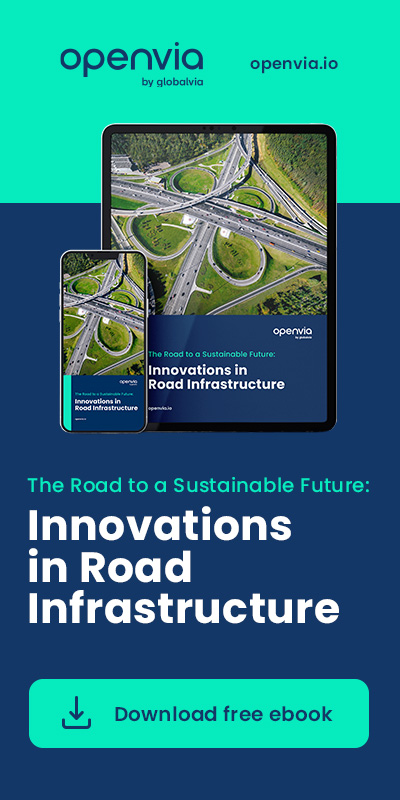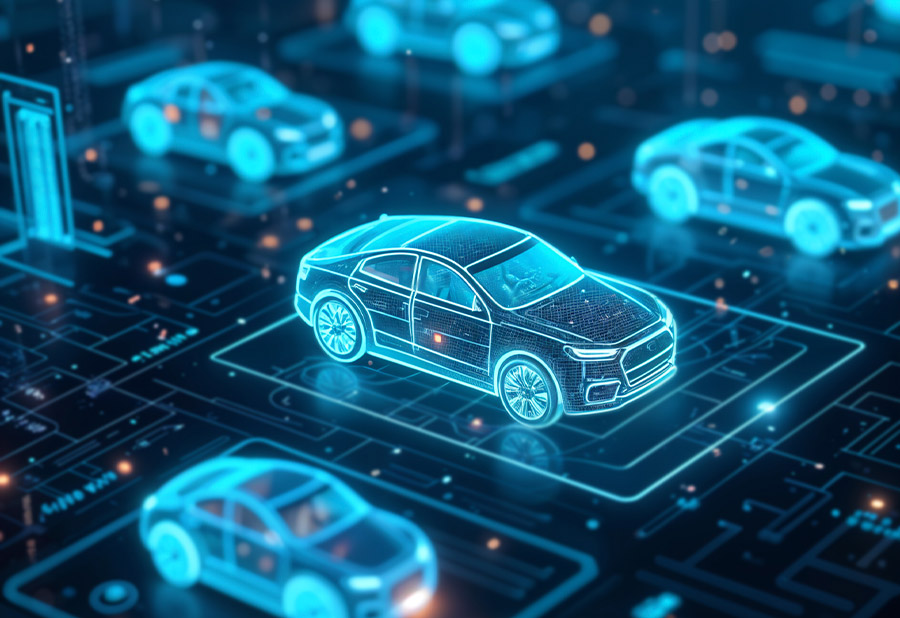In the coming years, the great challenge in infrastructure management will be to improve traffic flow by applying new technologies that ensure maximum safety and optimal infrastructure condition. This approach will become increasingly important in the near future.
On the one hand, cities are under increasing pressure to deal with traffic congestion, the environmental problems this causes, and the need to develop plans to improve infrastructure so that public transport is also a good alternative to the private car. But the use of private vehicles on the roads has to offer an ever better experience: a better connection between the infrastructure, the cars and their users,
guaranteeing maximum safety with all the necessary elements to achieve an innovative transformation that ensures high quality travel at all times.
This is why the digitization of road infrastructure is the future solution. And this can only be achieved through the use of new disruptive technologies in the so-called smart roads concept. The technological revolution has changed all the sectors in which it has been applied, and road infrastructure is just one more path that can be improved thanks to different technological elements.
Ways to digitize infrastructures for greater security and sustainability
If we focus on the different ways of digitizing infrastructures for road management and maintenance, the applications are based, above all, on keeping them in good condition and on prevention. To achieve this, AI tools are designed to perform data-driven analysis and predictions.
In this sense, it is important to investigate more about the different technological elements that can help the digitalization of infrastructures. The objective is none other than to achieve a safer and more sustainable road network.
IOT and Artificial Intelligence in infrastructures
Beyond computers and smartphones, IOT, or the Internet of Things, can be applied in different areas with the sole objective of improving them. Obviously road infrastructure is one of them, and the creation of so-called smart roads is the main objective currently being worked on.
Advanced Driver Assistance Systems (ADAS)
Among all the emerging technologies in the field of road safety, Advanced Driver Assistance Systems (ADAS) are a pioneering example. This type of technology is based on real-time data collection and analysis. These, previously provided by a comprehensive network of sensors, cameras and radars, are designed to assist drivers, enabling them to make safer, more efficient and informed decisions on the road.
Known as SAACs, they make use of both Artificial Intelligence and IoT to interpret and react to a variety of road and traffic conditions. Among the most common functions included in these systems are lane departure warning, which alerts the driver if the vehicle deviates from its lane without signaling; automatic emergency braking, which can stop the vehicle if a risk of collision is detected; adaptive cruise control, which automatically adjusts the vehicle’s speed to maintain a safe distance from other vehicles; and forward collision warning, which alerts the driver if there is a risk of collision.
These functions are critical to improving the driver’s situational awareness. By providing real-time information about road conditions and potential hazards, driver assistance systems can help drivers avoid driving errors that could result in accidents. This not only improves the safety of the individual driver, but also benefits all road users by reducing the likelihood of incidents on the traffic network.
Big Data and IoT applications for resource use optimization
The integration of Big Data and the Internet of Things (IoT) into road infrastructure management is transforming the way we use and conserve our resources. Beyond their contribution to road safety, these technologies are also fostering greater sustainability and efficiency.
Big Data analytics has become an essential tool for the efficient management of roadway infrastructure. By collecting and analyzing large volumes of data on infrastructure usage, traffic patterns, road conditions and other relevant factors, trends and patterns can be identified that can inform decision making.
In addition, the use of IoT devices in road infrastructure is enabling more proactive road management. Sensors can continuously monitor the condition of the road, and the data collected can be analyzed to predict when and where failures will occur. This predictive maintenance approach not only helps prevent failures before they occur, but also prolongs the life of construction materials and reduces the need for costly and frequent repairs.
Therefore, the application of Big Data and IoT in road infrastructure management is providing a path towards a more efficient and sustainable management of our resources, benefiting both the economy and the environment.
Public policy and investment in the advancement of road digitization
The main objective of the use of artificial intelligence and technology in infrastructure improvement is to improve communication between the vehicle and the ecosystem on the road or to offer new services to users.
Logically, to achieve the digital transformation of roads, both public and private commitment and investment is needed. This means that public policies can play a key role in promoting the adoption of these technologies, through the creation of regulatory frameworks that encourage innovation and investment in digital infrastructure.
In addition, public-private collaboration can be crucial to accelerate the development and implementation of these solutions. Companies can bring technical expertise and innovation capabilities, while governments can provide the financial and regulatory support needed to scale these technologies nationally.
The so-called Vehicle-To-Everything (V2X) protocols are the ones that will make the connection between those who circulate on digitized roads, and the elements that surround them, whether other vehicles, pedestrians, infrastructure or mobile network, absolutely immediate, and this will not be possible if part of the investment is not deposited individually in workers or people who make use of these infrastructures.
The digitization of road infrastructure is a complex process involving multiple stakeholders and technologies. However, with the right collaboration and commitment, it is possible to transform our roads into safer, more efficient and sustainable systems. That is why, in this path towards digitalization, Openvia wants to be a strategic ally. Our experience and solutions in digital road infrastructures facilitate this transition towards smarter roads, while guaranteeing high safety and sustainability standards.






